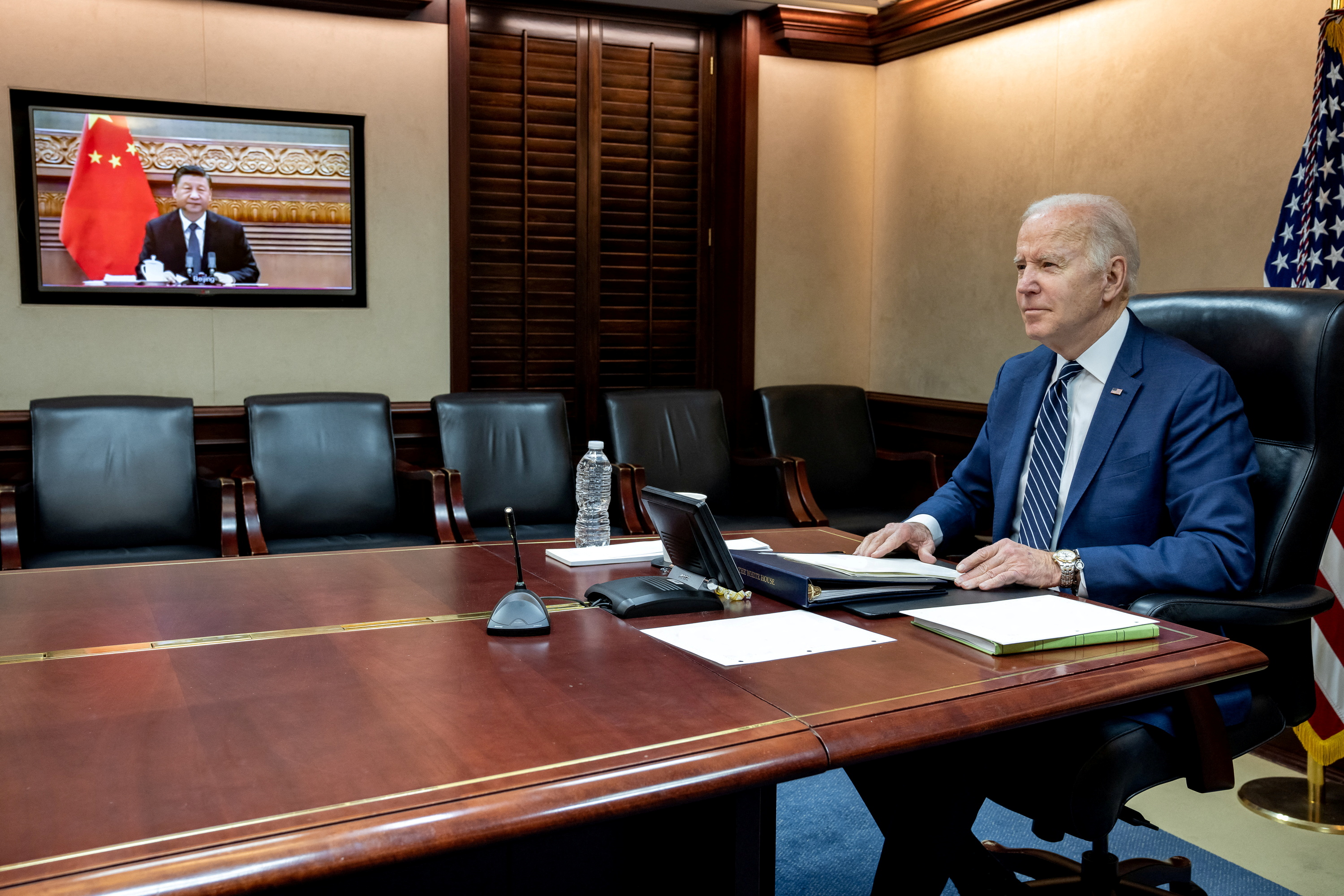Special NATO Summit in Brussels
An extraordinary NATO leaders summit on the war in Ukraine was held on 24 March in Brussels. The allies decided, among others, to strengthen the NATO military presence on the Eastern Flank and to increase military support for Ukraine. The Alliance is also working on long-term adaptation to the threat posed by Russia, but decisions on this issue are to be approved at the June summit in Madrid.
.jpg) Adam Schultz/White House/ Zuma Press/ FORUM
Adam Schultz/White House/ Zuma Press/ FORUM
What was the purpose of the special NATO summit?
After the virtual summit on 25 February, the day after the Russian aggression against Ukraine, this time the leaders met in person. The summit was to be a signal of their determination and political cohesion in the face of the month-long, full-scale Russian aggression against Ukraine. It was addressed to Russia, Ukraine, the citizens of NATO member states, but also to China. NATO warned Russia against using weapons of mass destruction in Ukraine. The allies also made it clear that they would not give up their support for Ukraine, and would even increase it. They approved the strengthening of defence and deterrence capabilities. Both actions are to prevent Russia from achieving its strategic goals, namely subjugating Ukraine and the political breakup of NATO to force the Alliance and the U.S. to withdraw their troops from the newer member states. In addition, the Alliance re-confirmed that it will defend the principles on which the European security system is based, such as the freedom of sovereign states to choose their own alliances, and will not give up its open-door policy. The alliance will also increase its support for other countries that may be threatened by Russia, including Georgia and Moldova. At the same time, the leaders tried to put pressure on Russia’s allies and friends; for example, they called on Belarus to stop supporting Russia’s aggression against Ukraine and warned China against providing such support.
What decisions were taken to strengthen NATO’s defence?
The allies approved the creation of four new battlegroups, one each in Romania, Bulgaria, Slovakia, and Hungary. Together with existing battlegroups in the Baltic states and Poland, the Alliance will have eight such formations along its Eastern Flank. This presence will make it difficult for Russia to intimidate individual countries or to paralyse political decision-making, so it should be easier for the Alliance to, for example, invoke Art. 5 during a conflict with Russia. The Alliance is also preparing for a scenario in which Russia might use weapons of mass destruction (chemical, biological, radiological, and/or nuclear; collectively, CBRN). Battlegroups are to be equipped with capabilities to counter CBRN threats, and the NATO commander activated NATO CBRN defence elements. This is all part of the Alliance’s broader adaptation to the threat posed by Russia. NATO had already significantly increased its presence on the Eastern Flank in recent months and raised the readiness of troops that may be additionally deployed in the event of further escalation. NATO is also developing long-term plans to strengthen its defence and deterrence capabilities, but decisions on this will be taken at the June summit in Madrid, during which the Alliance’s new strategy is to be approved. The leaders decided to extend the mandate of the current Secretary General, which ended this year, until the end of September 2023. This should facilitate political adaptation of the Alliance to the new threats and its smooth functioning during the crisis.
What decisions were taken on support for Ukraine?
Due to concerns that Russia may be preparing to use chemical or biological weapons, the Allies decided to strengthen Ukraine’s ability to respond to an attack employing weapons of mass destruction. NATO will offer Ukraine CBRN equipment for detection and protection, and will help with training on decontamination and crisis management after such an attack. It also announced the strengthening of Ukraine's ability to combat cyberthreats. The Alliance will also continue its current support in the form of the transfer of equipment and weapons, including anti-tank and anti-aircraft missile launchers and drones. NATO clearly wants to avoid a situation in which support for Ukraine will be used by Russia as a pretext for attacks on NATO members or convoys, so it has not stated whether a decision has been made to transfer more advanced types of weapons.
Was the Polish proposal to send a peacekeeping mission to Ukraine considered?
NATO’s Secretary General did not directly answer the question whether such a proposal had been considered. He stressed once again that the Alliance did not intend to send troops to Ukraine, as this would increase the risk of war between NATO and Russia. The Allies are ready to support Ukraine, but they take seriously the risk of escalating the conflict beyond that country’s territory. The Polish proposal, however, can be seen as an attempt to pressure the allies to increase support for Ukraine and to further strengthen the pressure on Russia. Ukraine has been officially provided with equipment and weapons by around only half of the 30 NATO member states. There is also a risk that after the first shock that came with the war, some states may find that nothing more can be done and will put pressure on Ukraine to accept Russia's demands. Therefore, it is in Poland’s interest to exert constant pressure on the allies to provide as much support as possible to Ukraine and to impose additional sanctions on Russia. Only a combination of the impossibility of achieving strategic goals by military means and the threat of an economic collapse and destabilisation of Russia may induce Vladimir Putin to enter into negotiations on terms that will be acceptable to the Ukrainian authorities.



_sm.jpg)
